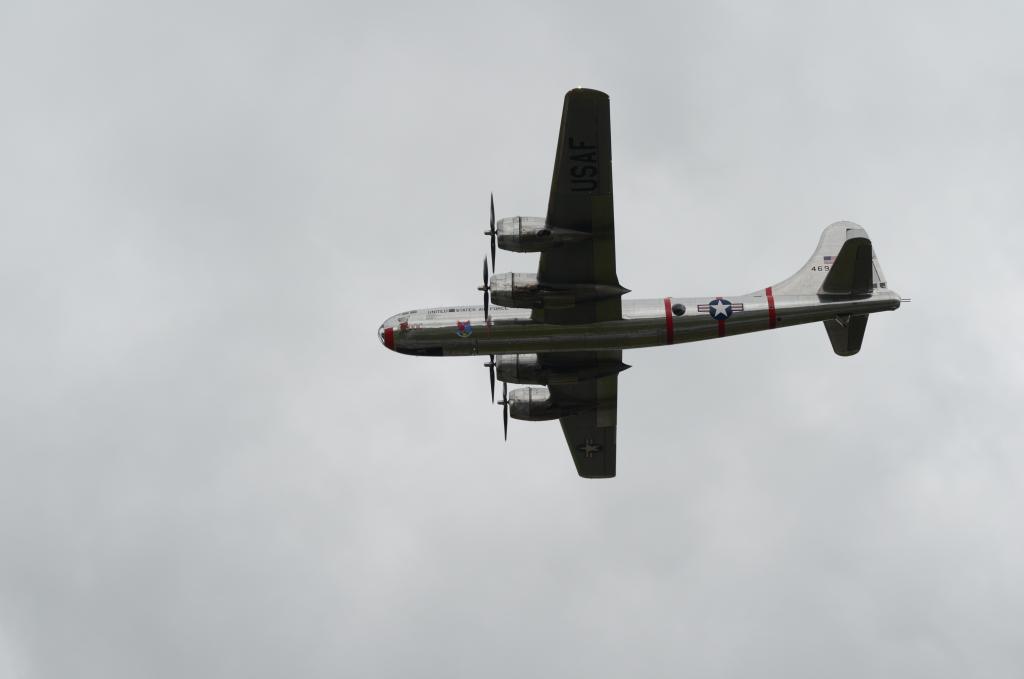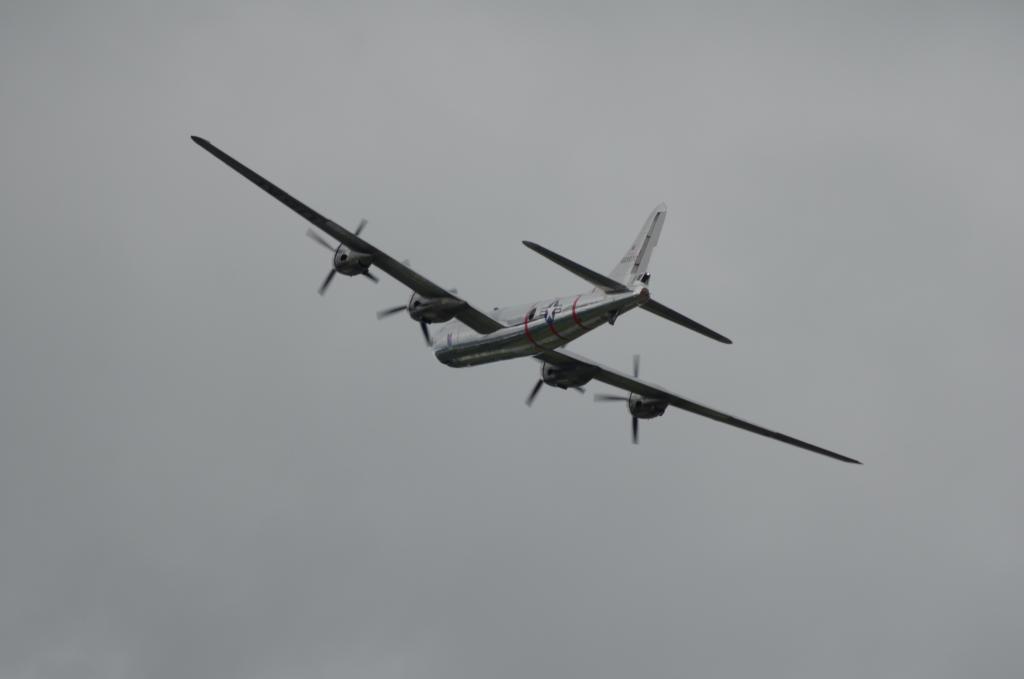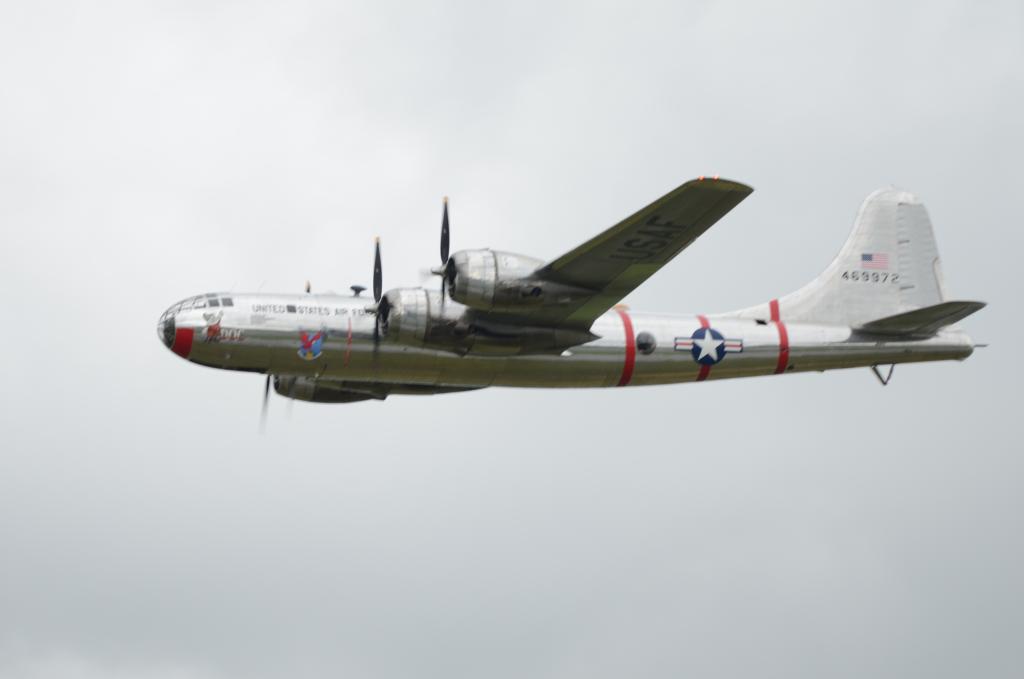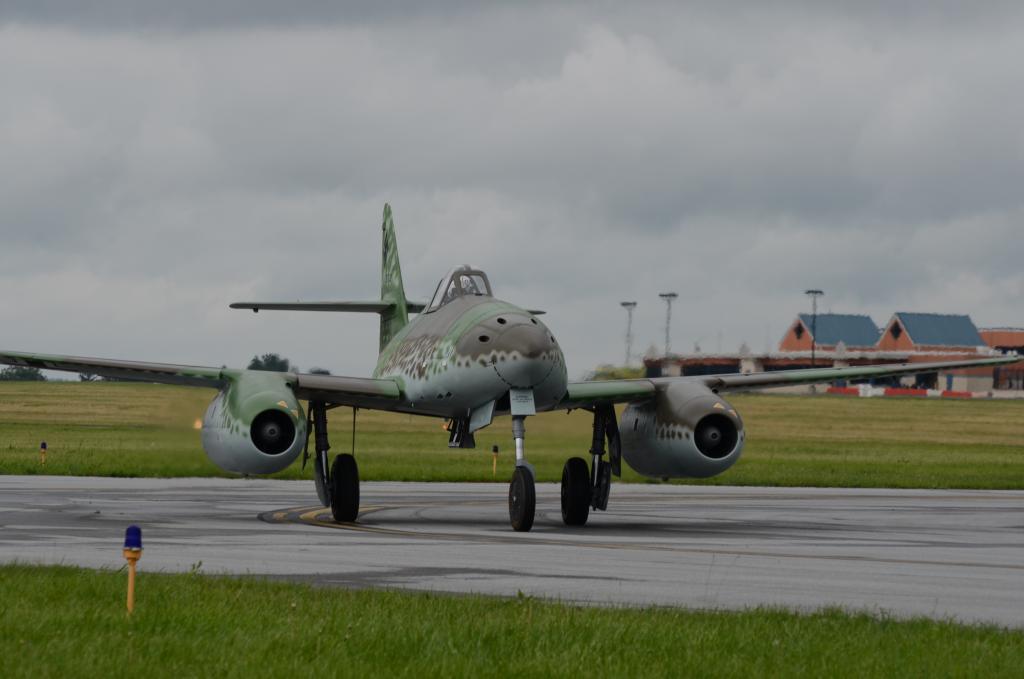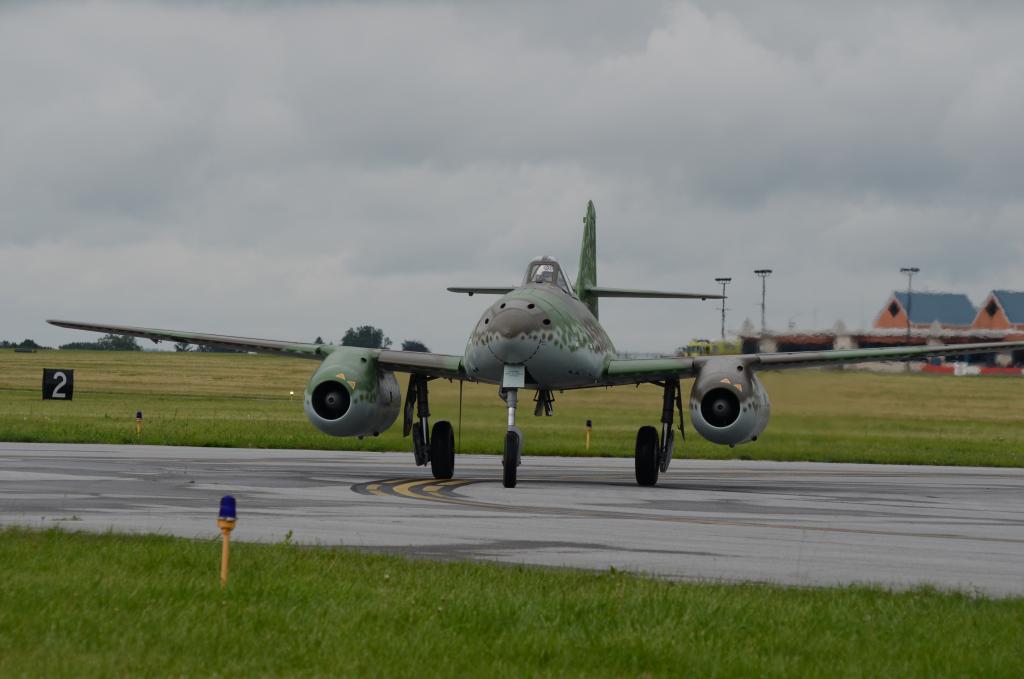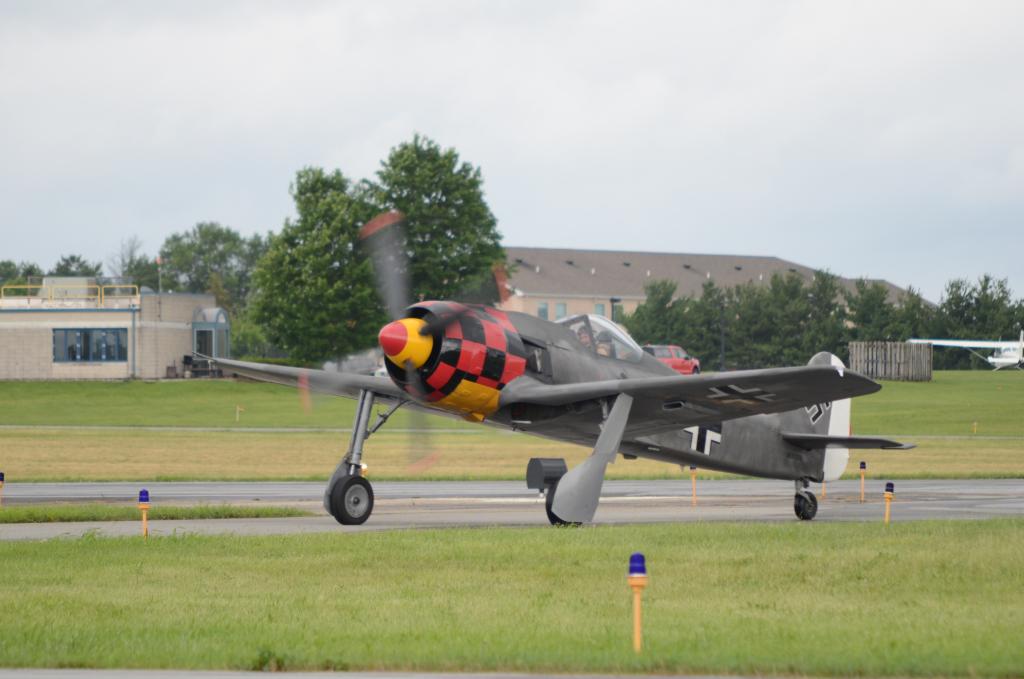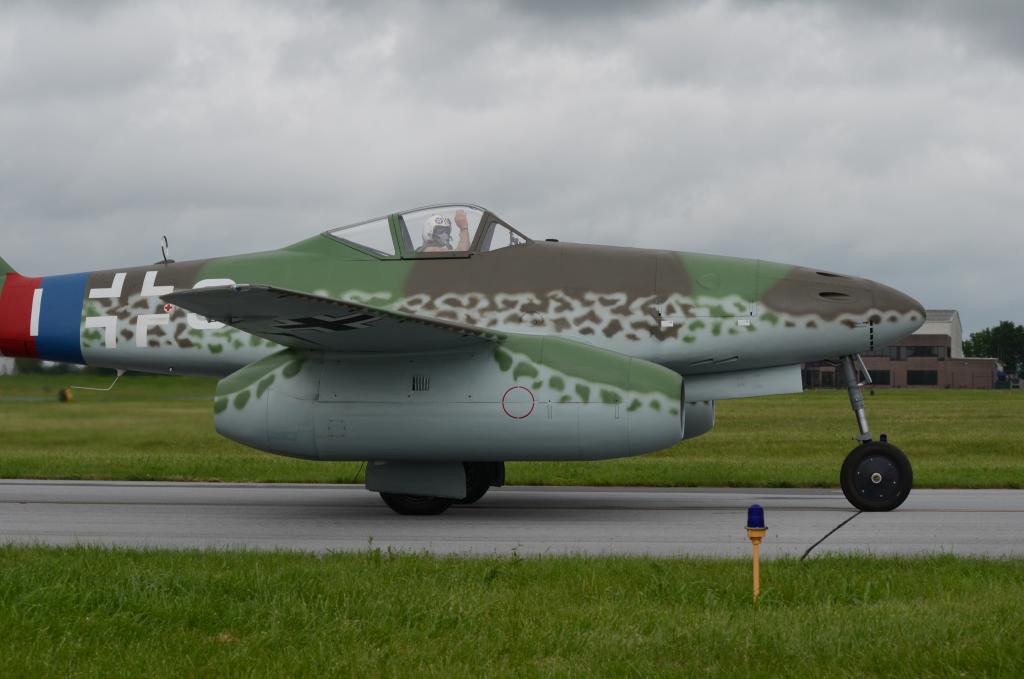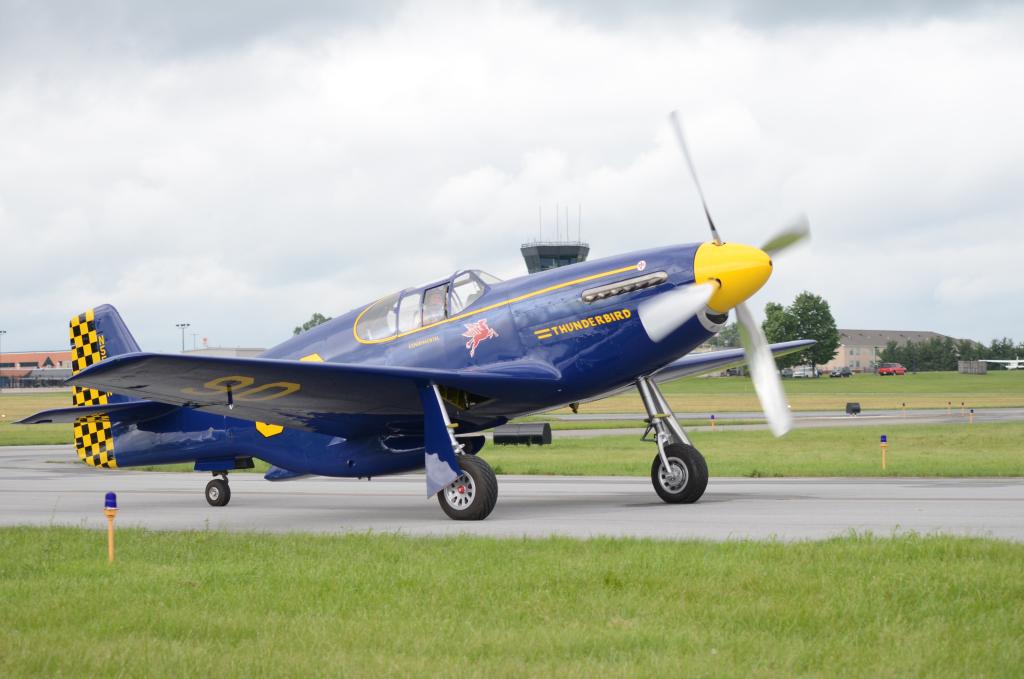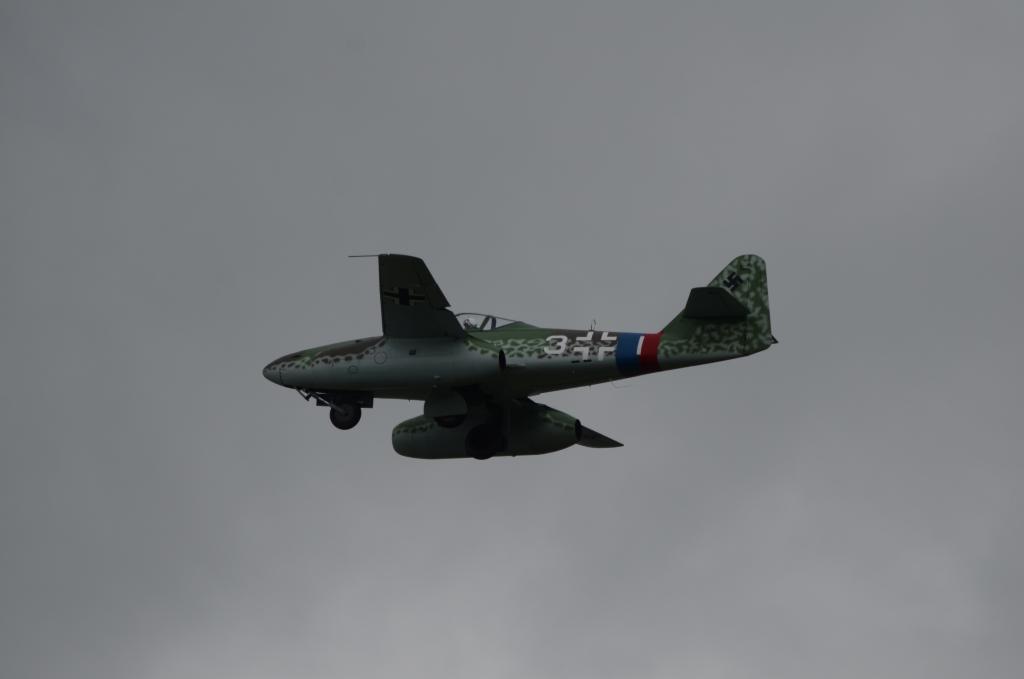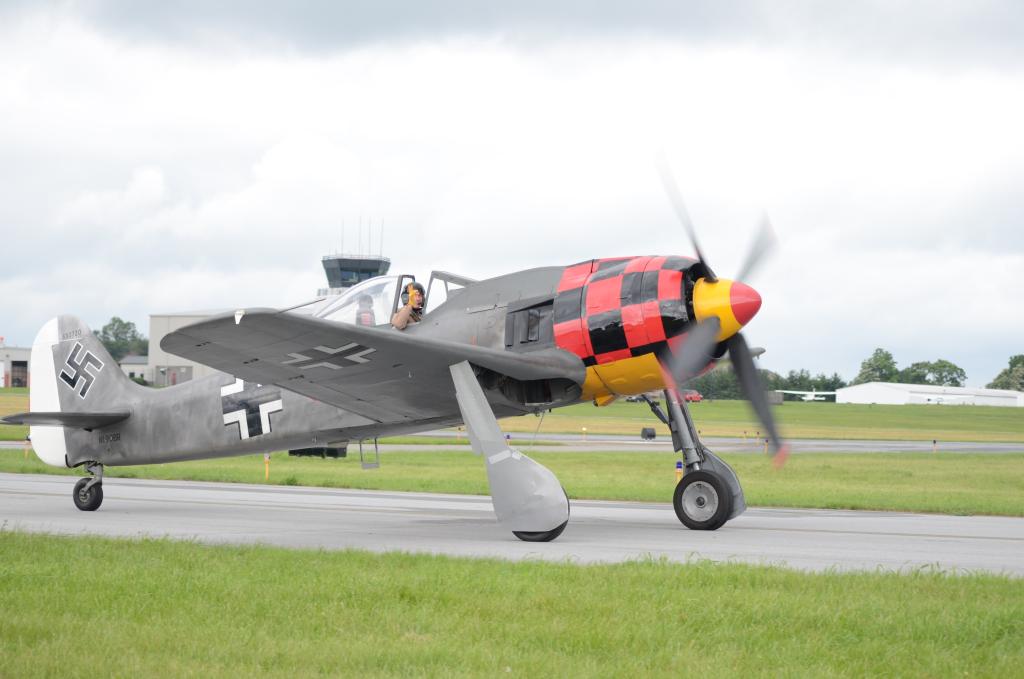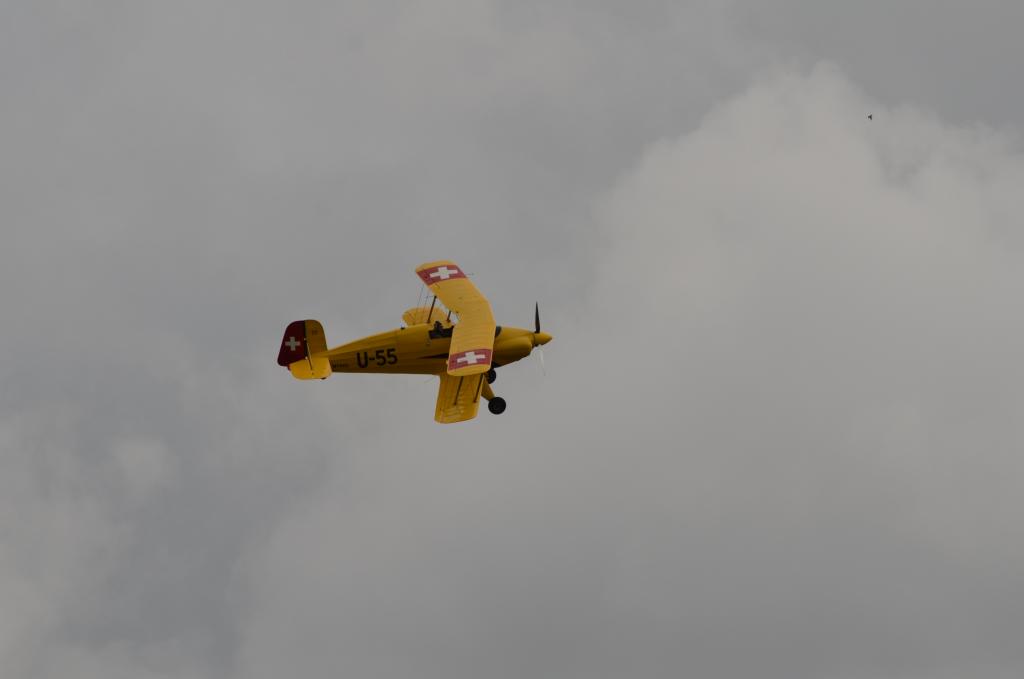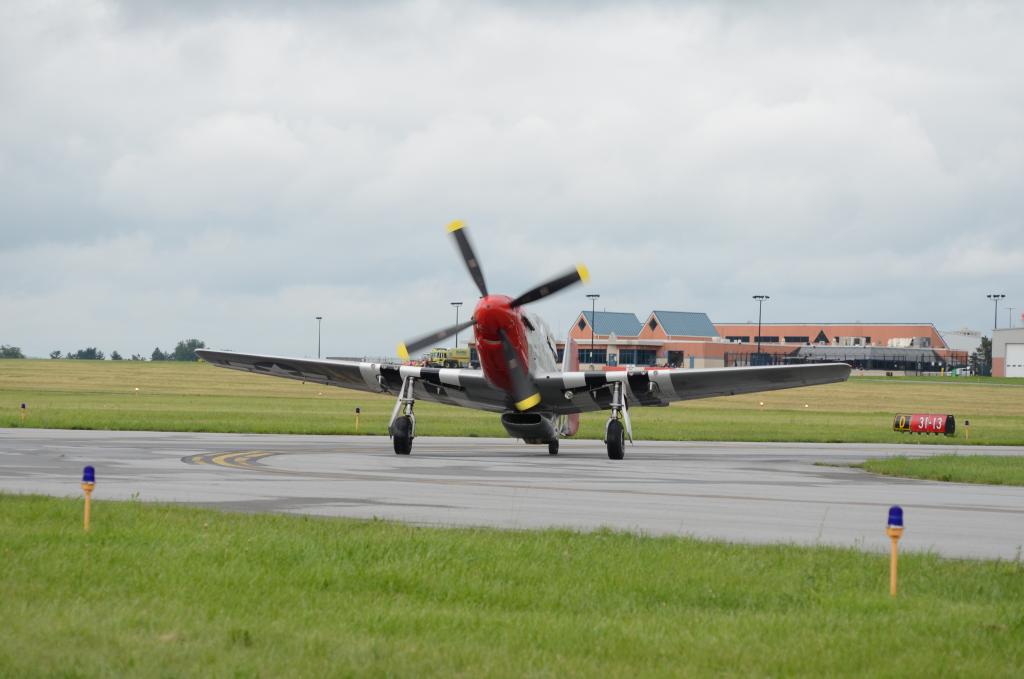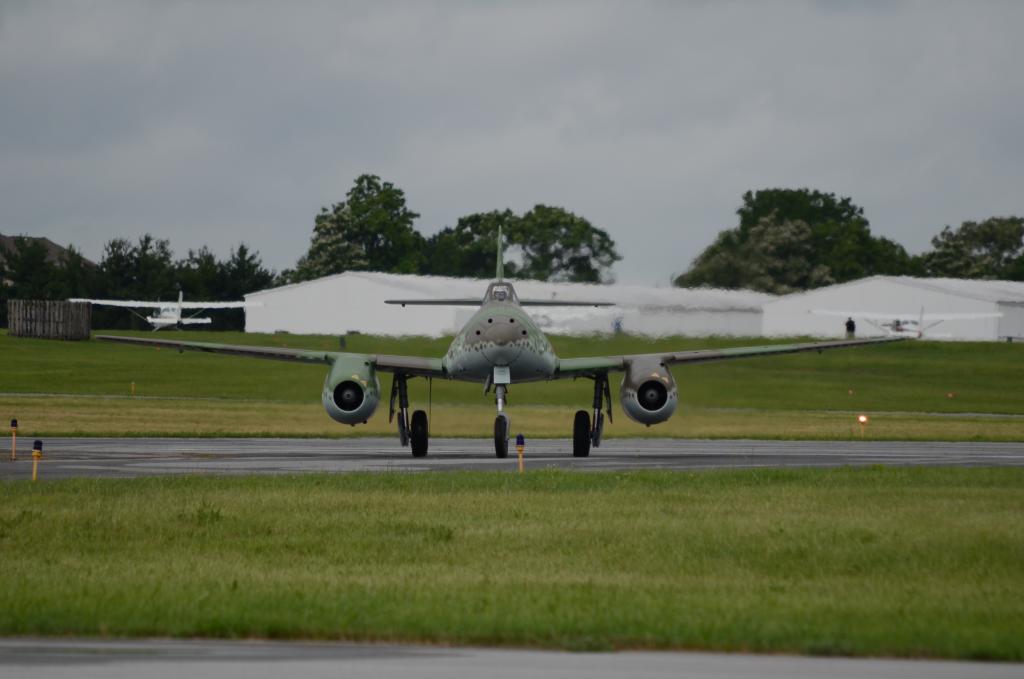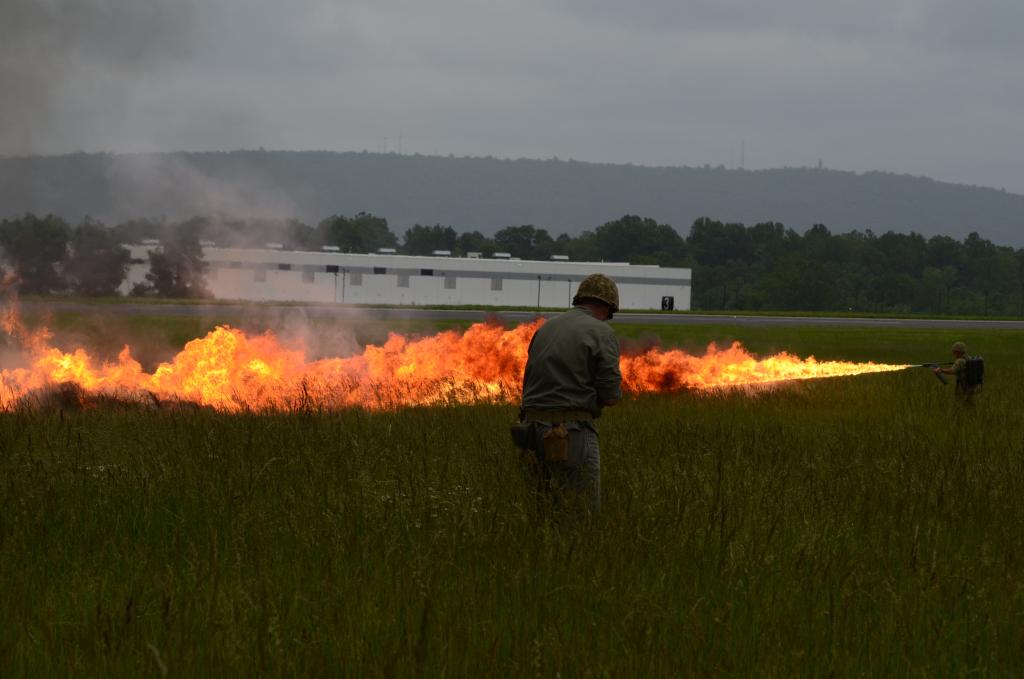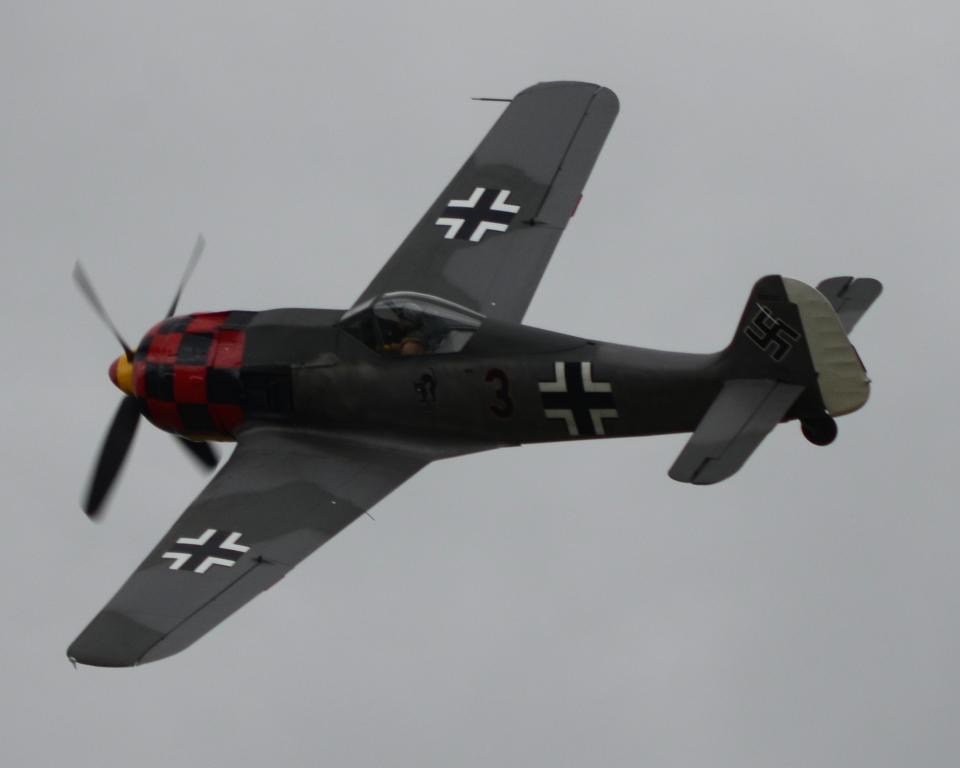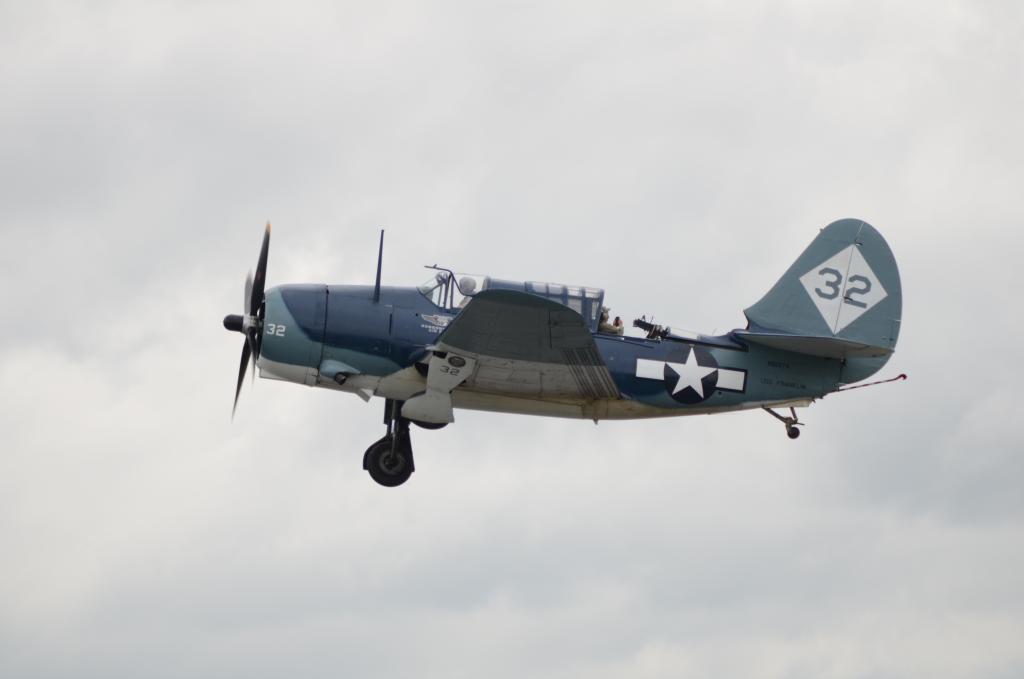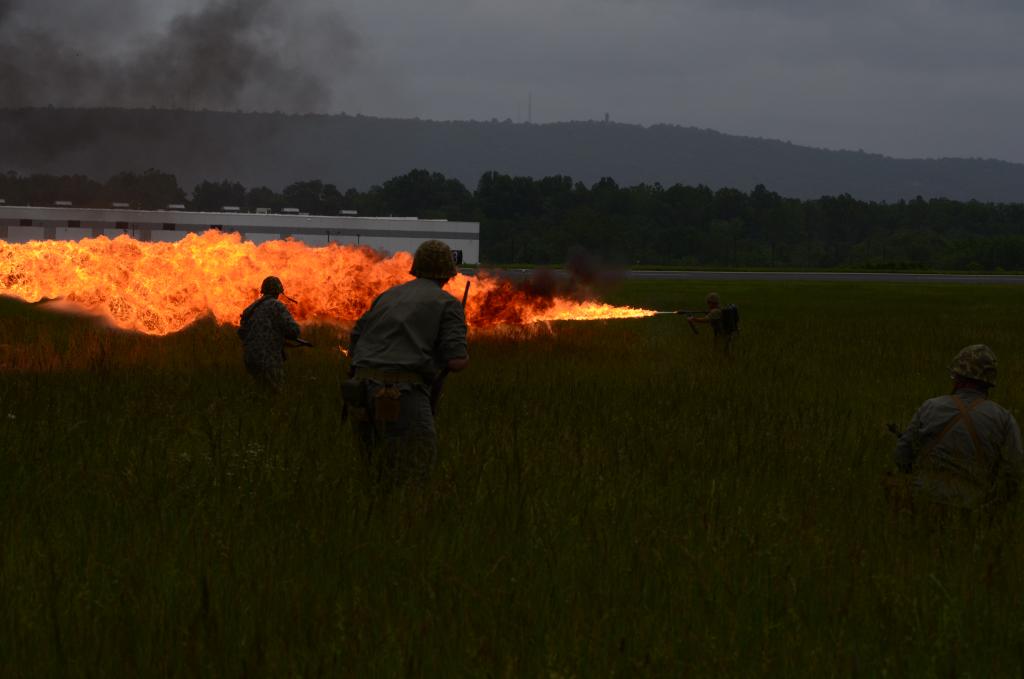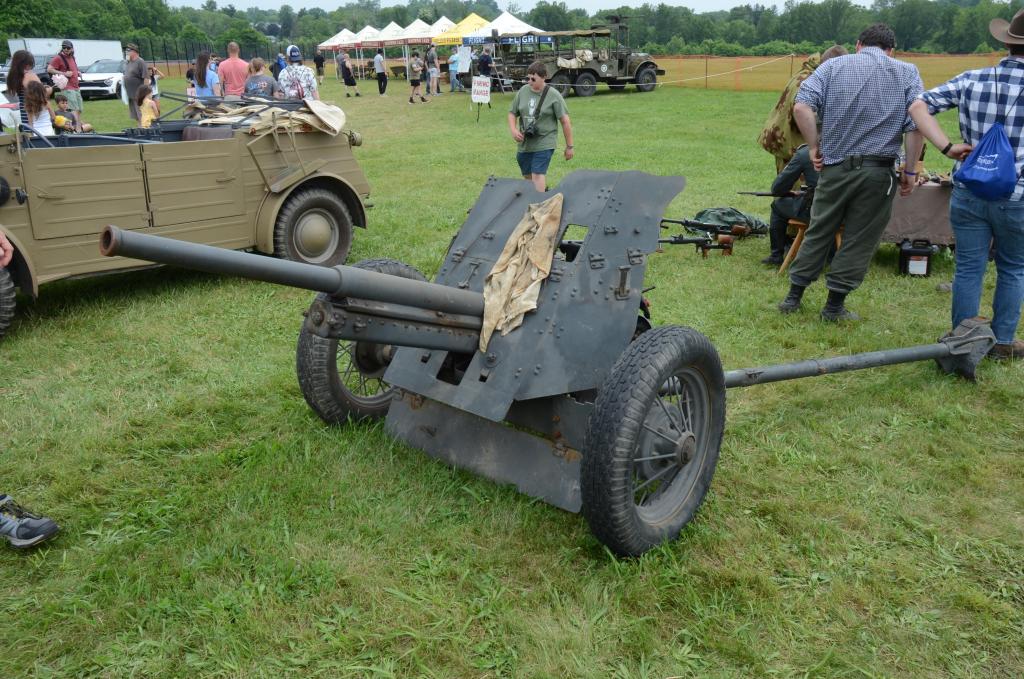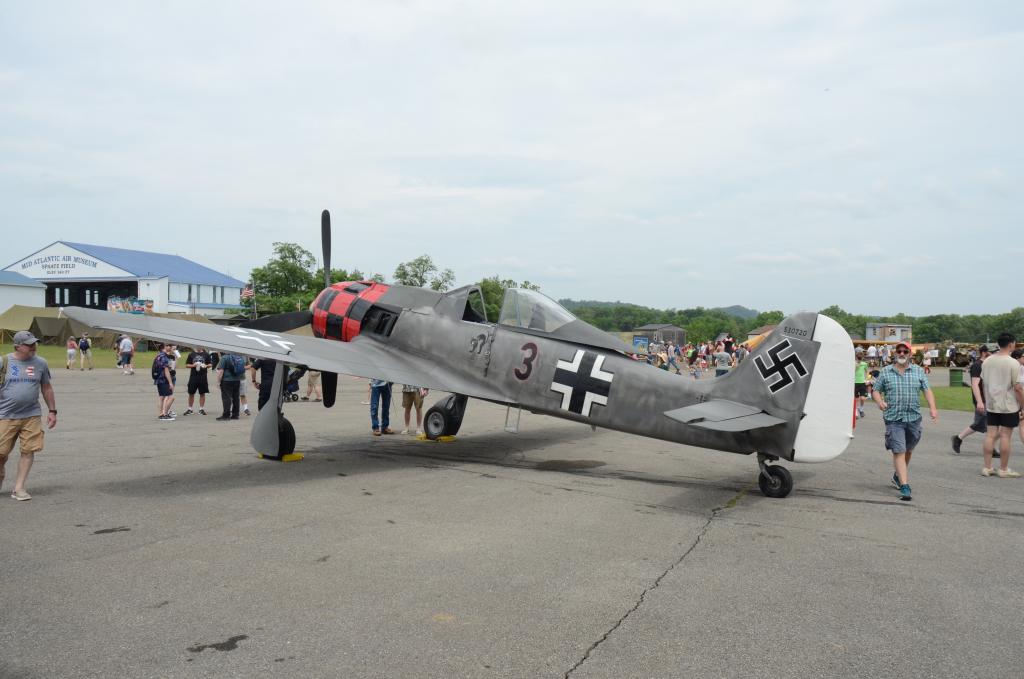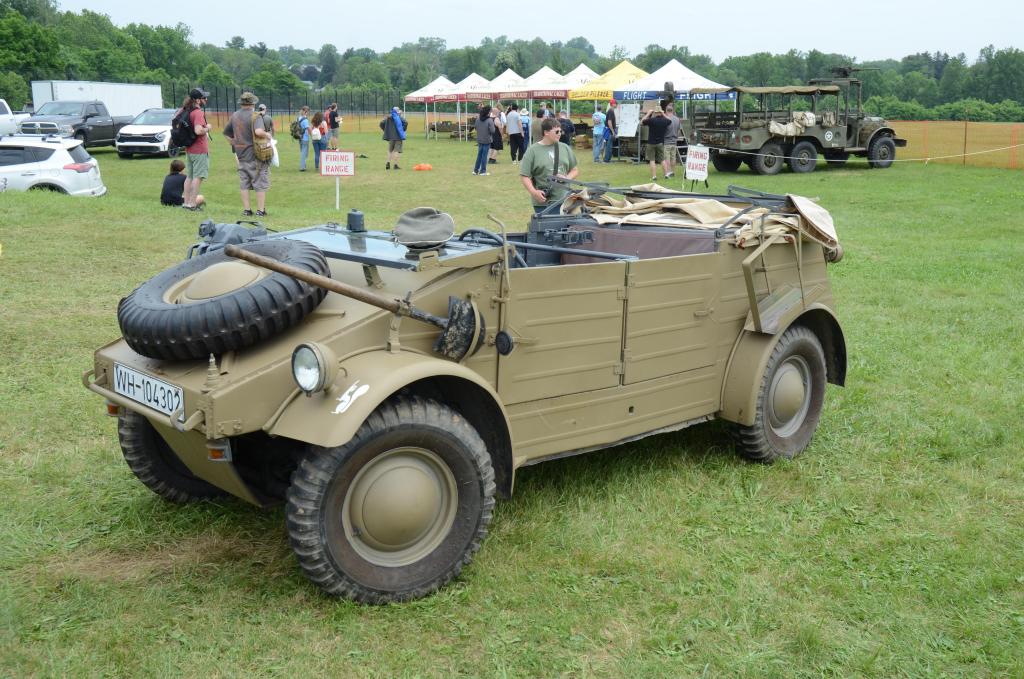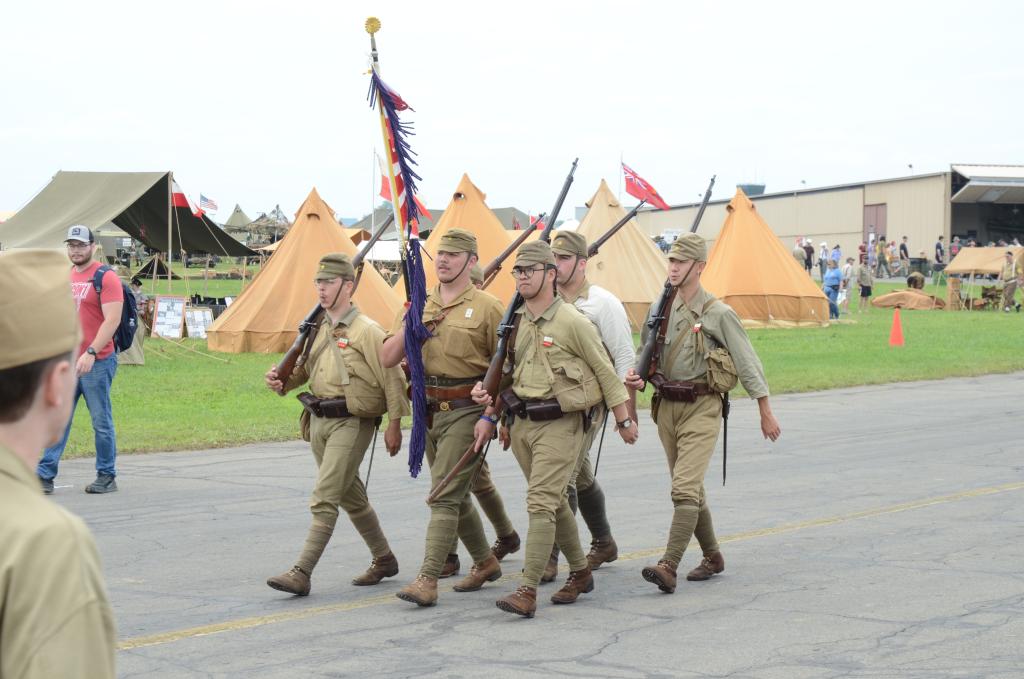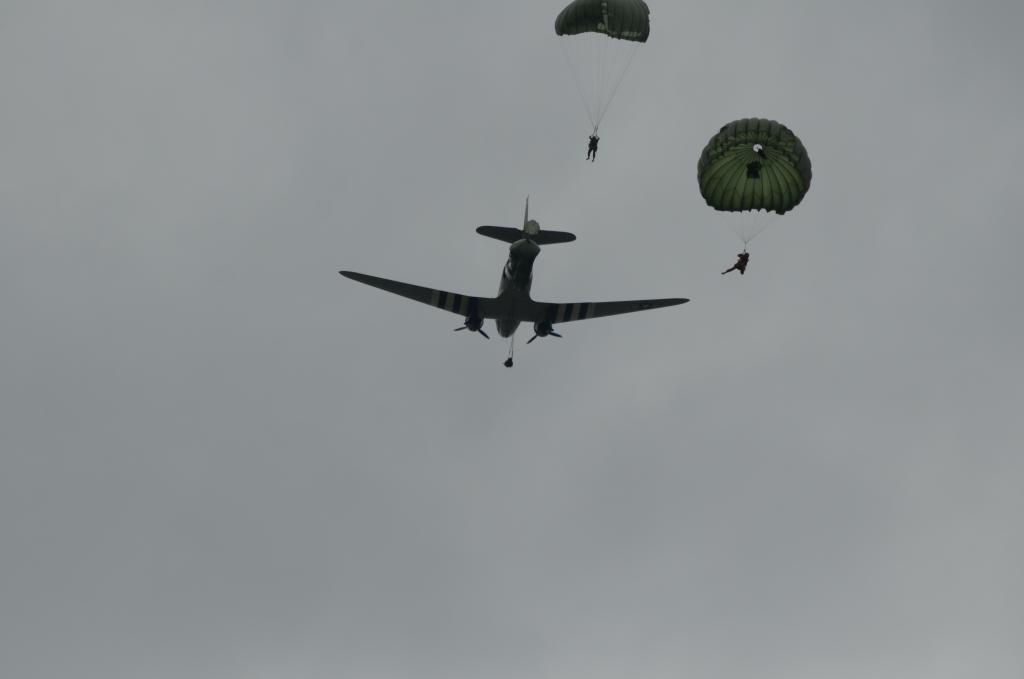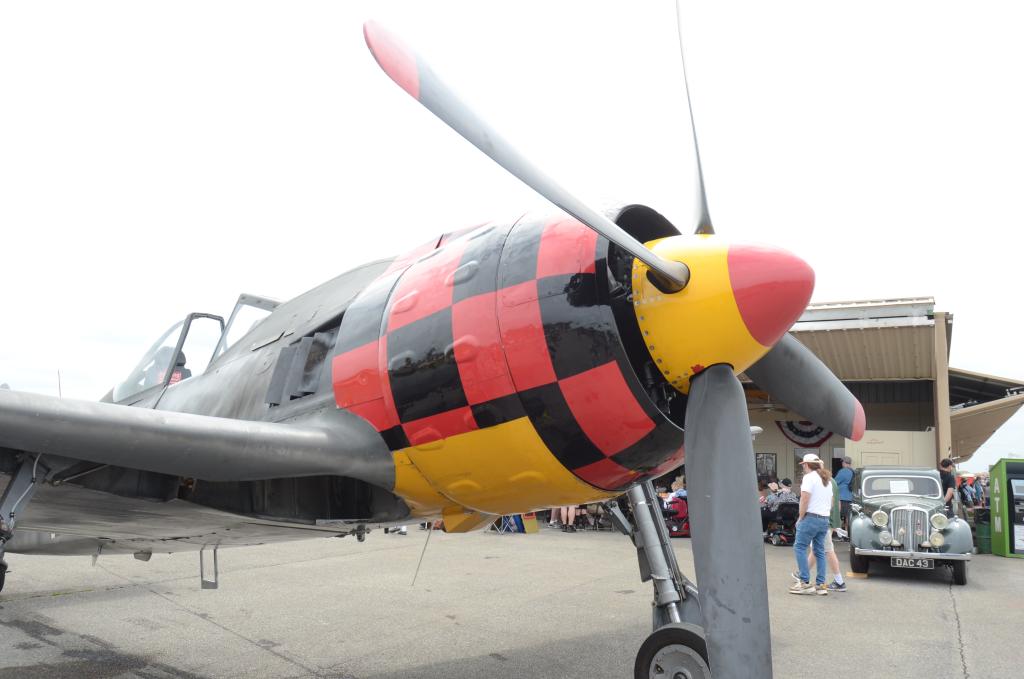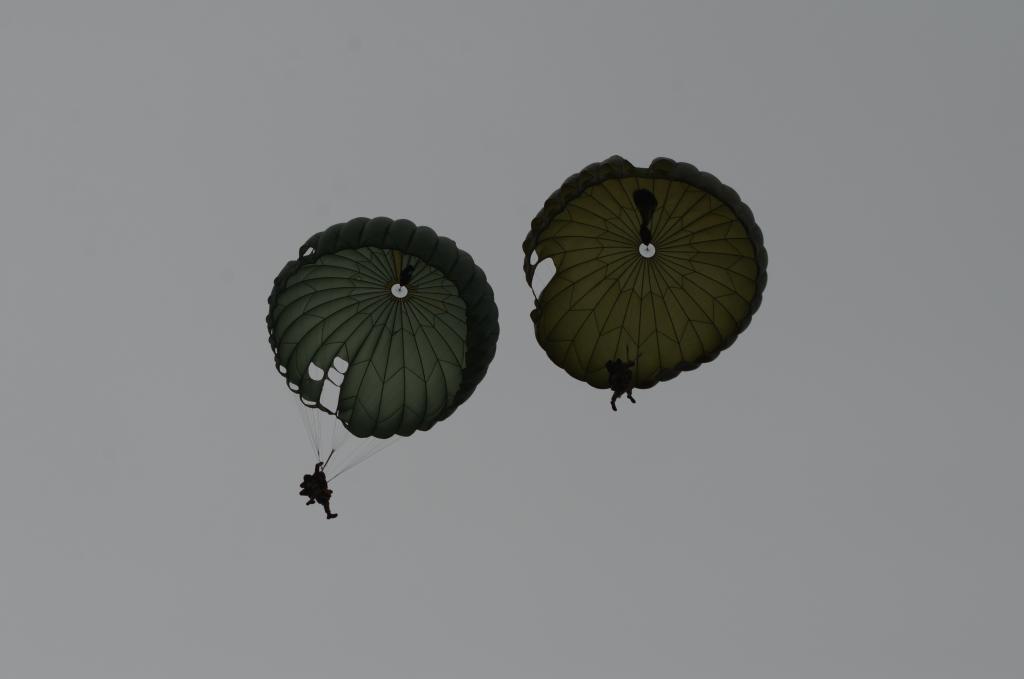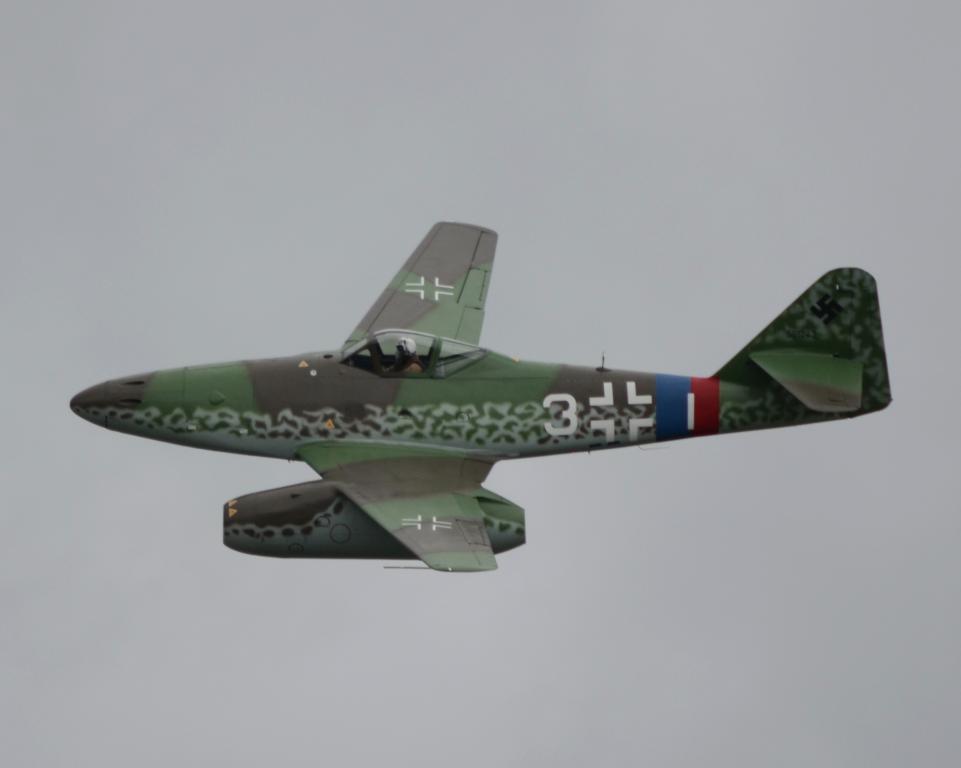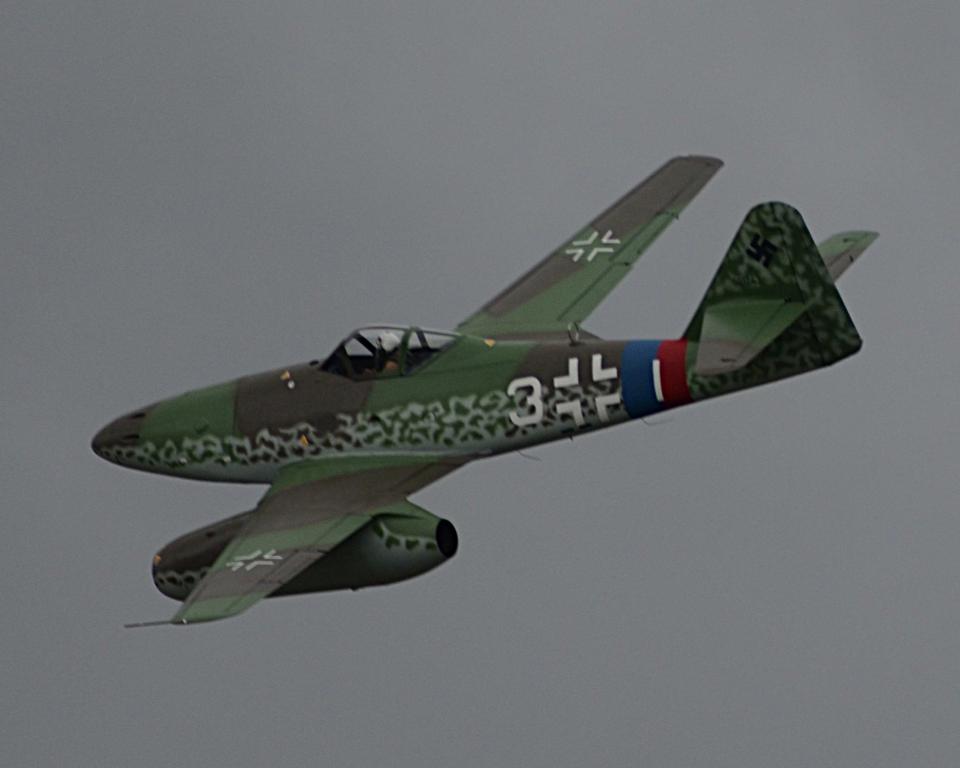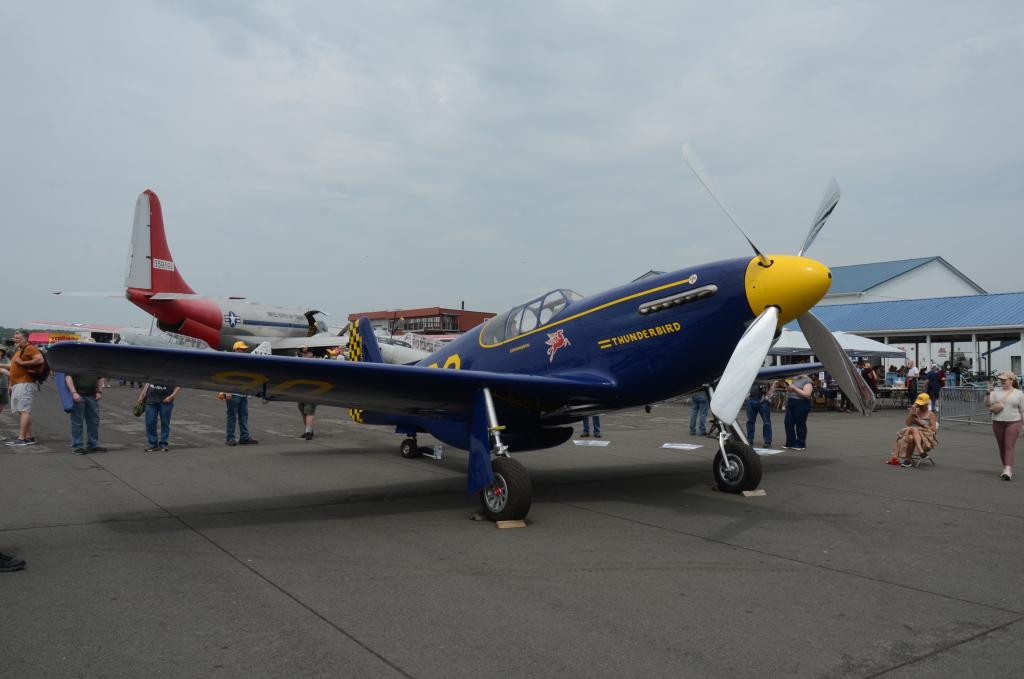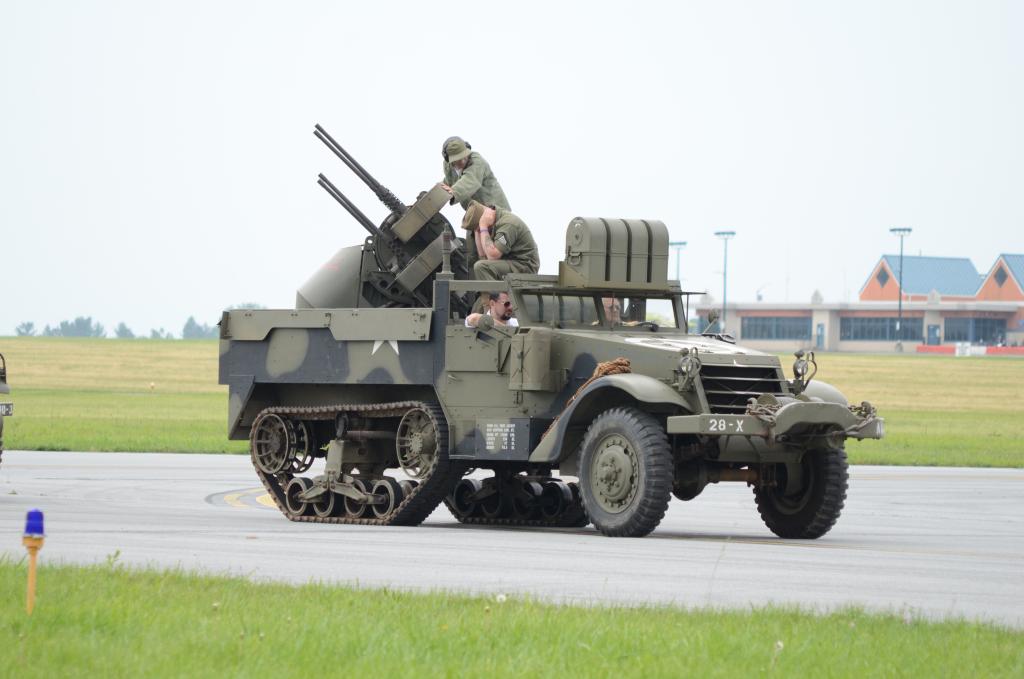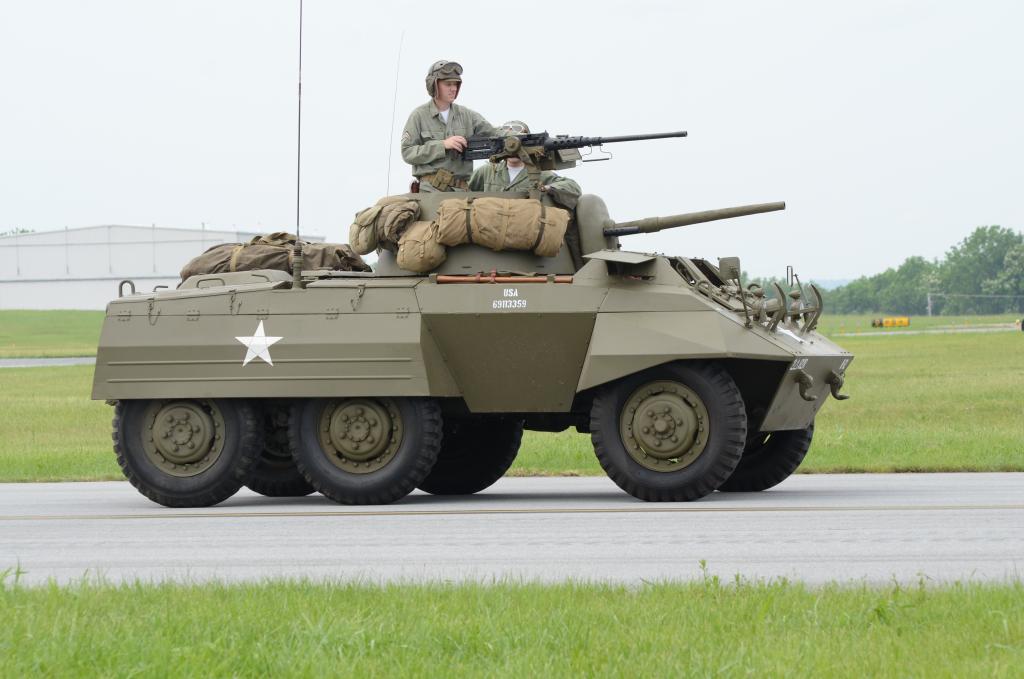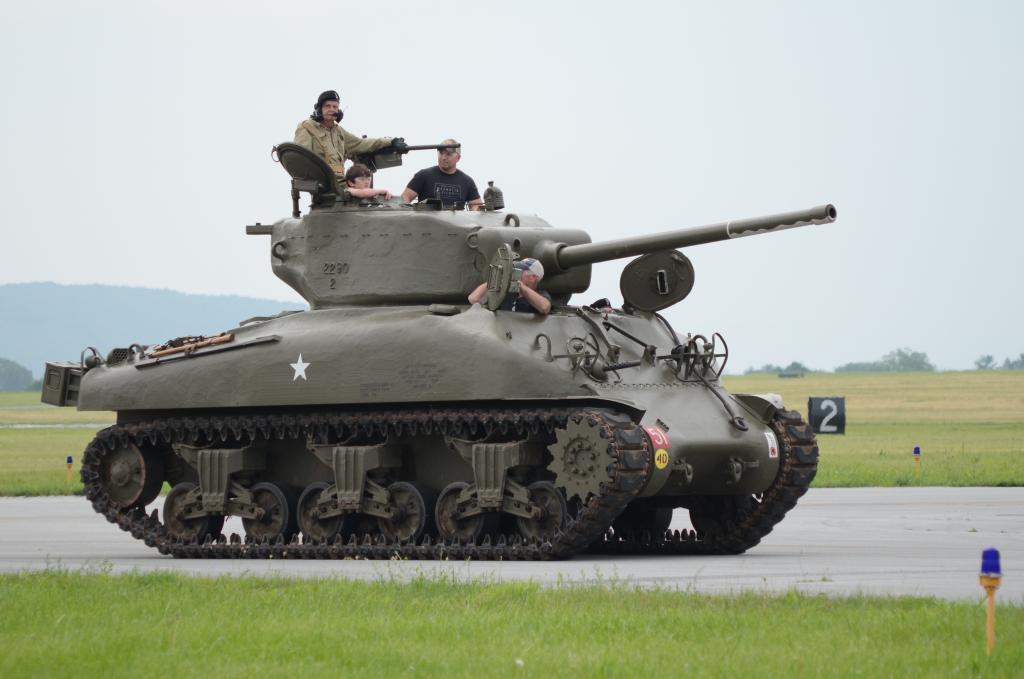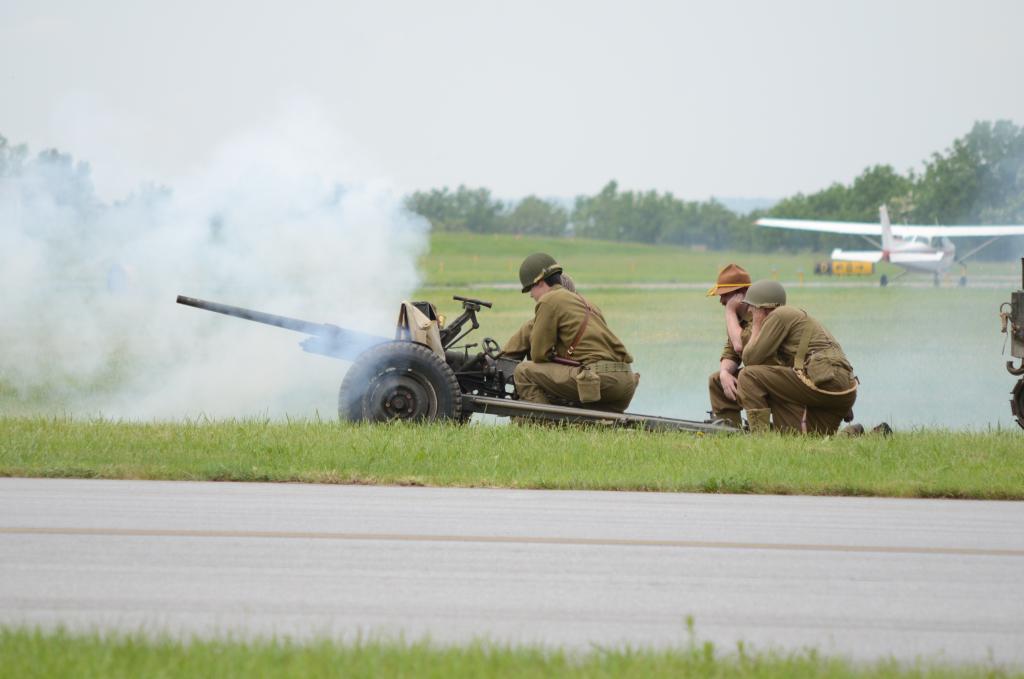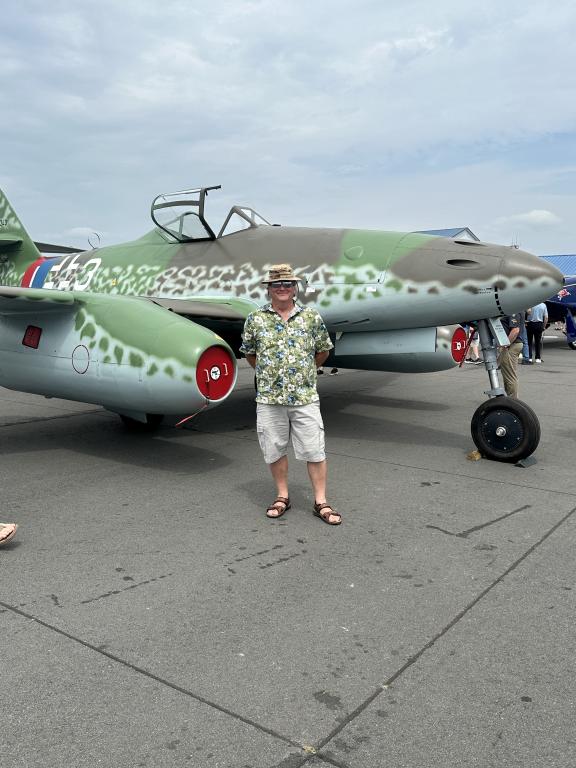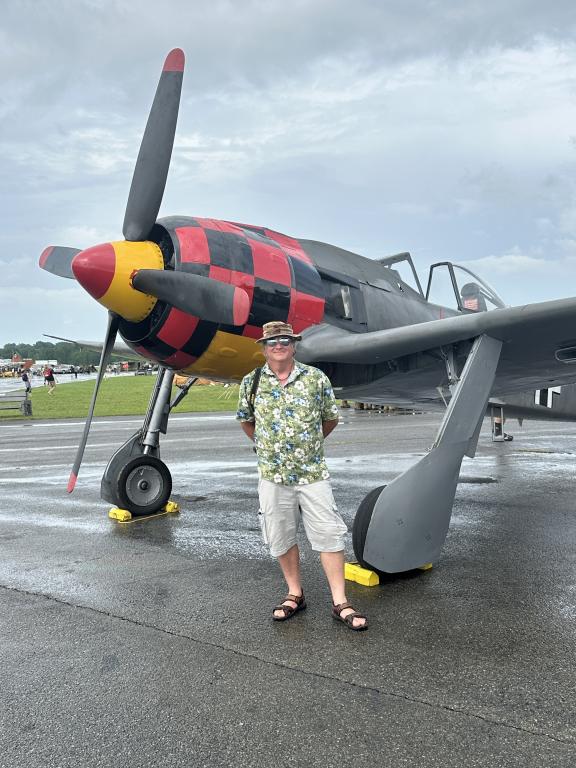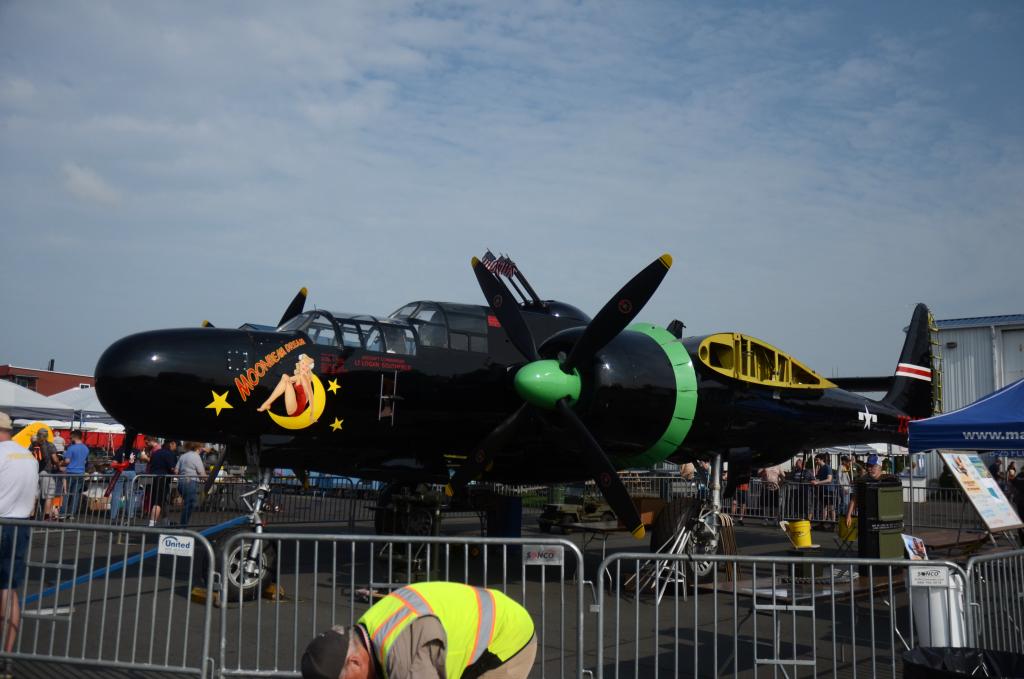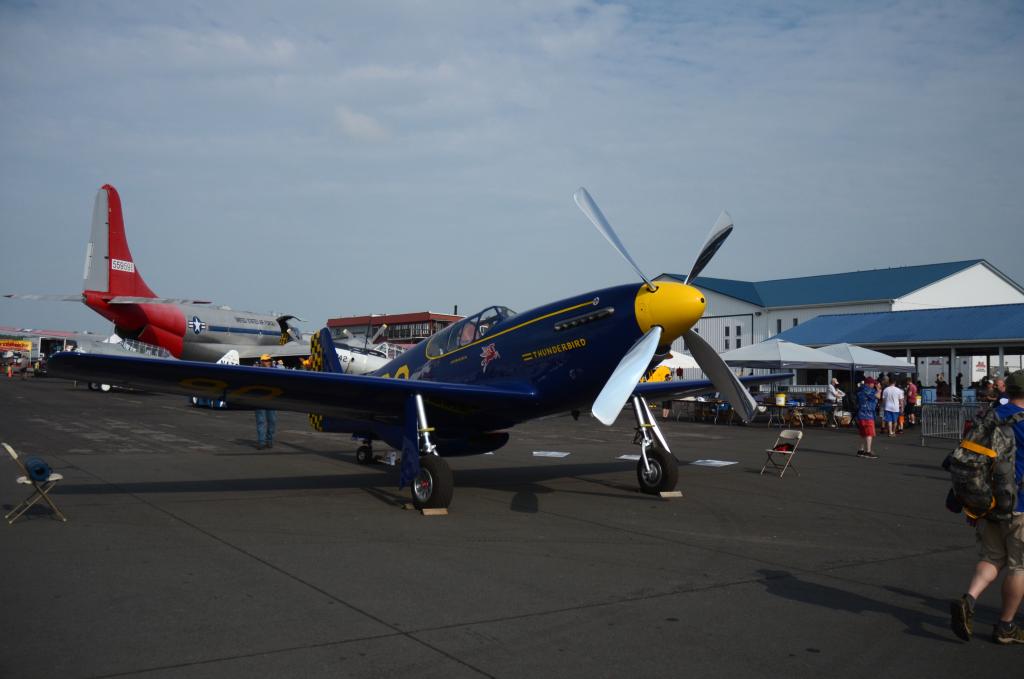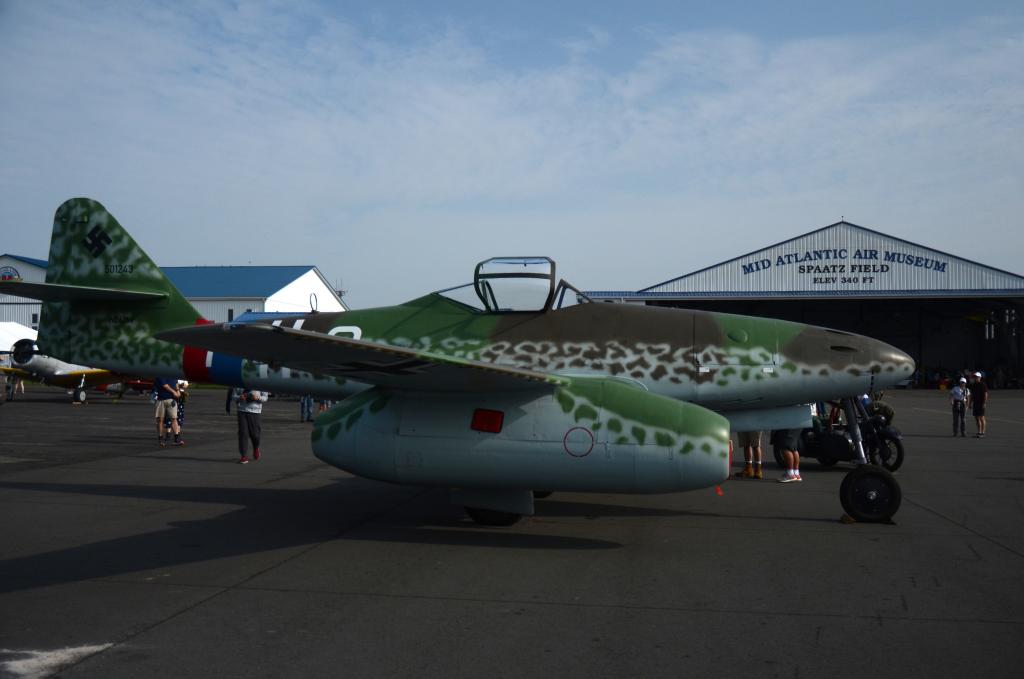-
Contributing Member


Show was awesome. For a while in the afternoon I was afraid I wasn't going to see the FW 190 or ME 262 fly as we had a significant rain storm hit before they could fly. They said the 262 only made three passes on Saturday. We got there early, got spots right next to the field/fence and then hit the flea market. I got a few bargains I'll post later in the flea market, yard sale thread. Got pics of the two planes in their static displays and then walked around the re-enactor groups waiting for the air show to start. Liason and trainers always scheduled first but they sent out a P-51 C to do some acrobatics before them because they "wanted to fit it in before the rain". They had a vehicle parade and the D-Day paratroopers dropped in before the flights. Then rain, two hour delay and the fighters were brought out. The FW 190 was good but the 262 was awesome. I don't know how they sounded in WWII but this one with modern engines was really pretty quiet compared to the piston engines. Quite a few passes today, took a lot of photos and videos, I'll post a few once they are all transferred to computer. If one of these is anywhere nearby, I highly recommend going to see it. I've always been a plane geek and this was like hitting the jackpot.
-
The Following 2 Members Say Thank You to Aragorn243 For This Useful Post:
-
06-08-2025 09:27 PM
# ADS
Friends and Sponsors

-
Contributing Member


The Germans in WWII had some very good kit among them the 262 alas the Comet whilst climbed at a rate comparable in todays world once the fuel ran out it became a glider easy pickings.
The 262 on the other hand was a real work of art the very first trials ones were tail draggers on the first flight the pilot got it airborne by stepping on the brakes to momentarily drop the nose so the wings could bite and off it went to land shortly after with an engine fire a common problem but here are some facts;
An engined could be replaced in 20 minutes by the ground crew, it had leading edge slats a new innovation to increase wing area at low speeds & take offs, the 4 x 30mm cannon pack could be changed as a single unit, the fuselage could also be changed as a single unit everything was a plug & play for ease of maintenance.
Thankfully for us Herr Dumb *** fiddled with its build to be a revenge bomber thus denying the German front line fighter units of the 262 for a full year whilst they tried to make it work in the end they gave up and just made a fighter variant.
front line fighter units of the 262 for a full year whilst they tried to make it work in the end they gave up and just made a fighter variant.
The ME -262 was to fast for the B-17 turrets to track, those 4 x 30mm cannons decimated bombers, the Red Tails devised a plan of when the jets attacked they formed a line of their P-51's and all opened fire so the jets had to fly through a wall of 50 cal's.
The Germans had some very good kit we were so lucky they were poorly led by Herr H who dabbled in everything and like Napoleon fighting a war on 2 fronts is not a good option if you read up on their secret weapons development its pretty scary they did have a saucer that climbed to 40,000ft in 4 minutes I think among other nastier stuff.
-
The Following 2 Members Say Thank You to CINDERS For This Useful Post:
-
Contributing Member


Arguably, the Allies greatest asset in Europe during WWII was the Nazi leadership although Der Fuhrer wisely cancelled developing the 140t E-100 and the 188t! Panzer VII. Fortunately, the Austrian paper hanger made many other blunders as noted by Cinders.
-
-
Moderator
(M1 Garand/M14/M1A Rifles)


Interestingly, the ME262's original engines killed more men than the Allies did. The Germans were advanced in everything except for their engine metallurgy with the results that they experienced compressor fan failures. According to the book, A Higher Call, by Adam Makos, Franz Stigler, a German ace and instructor pilot in the ME262, the engines weren't trusted for more than thirty hours before they needed a rebuild. That rebuild earned them only eleven more hours before the engines were abandoned as junk. The problem was that the compressor disk would either fracture and bit ejected from the engine or would begin ejecting fan blades. Either condition instantly sent very hot shards into the fuel tanks causing an explosion. There was no real warning and the above service life numbers were simply estimates. Compounding this, if the engine was either accelerated or de-accelerated too quickly is would weaken the compressors. The problem wouldn't effect the present flight but the next pilot in the kite would face an explosion.
ace and instructor pilot in the ME262, the engines weren't trusted for more than thirty hours before they needed a rebuild. That rebuild earned them only eleven more hours before the engines were abandoned as junk. The problem was that the compressor disk would either fracture and bit ejected from the engine or would begin ejecting fan blades. Either condition instantly sent very hot shards into the fuel tanks causing an explosion. There was no real warning and the above service life numbers were simply estimates. Compounding this, if the engine was either accelerated or de-accelerated too quickly is would weaken the compressors. The problem wouldn't effect the present flight but the next pilot in the kite would face an explosion.
Modern flying replicas were built off the original plans but add safety features including the General Electric CJ610 engine built for LearJet private airliners.
Bob
"It is said, 'Go not to the elves for counsel for they will say both no and yes.' "
Frodo Baggins to Gildor Inglorion, The Fellowship of the Ring
-
Thank You to Bob Womack For This Useful Post:
-
Contributing Member


Here are some videos. I'm limited to under 60 seconds on imger so I'll have to link to the longer ones on my History Page.
FW 190 Takeoff
Imgur: The magic of the Internet
ME 263 Takeoff
Imgur: The magic of the Internet
Doc Takeoff
Imgur: The magic of the Internet
Last edited by Aragorn243; Yesterday at 09:18 AM.
-
The Following 4 Members Say Thank You to Aragorn243 For This Useful Post:
-
Contributing Member


Last edited by Aragorn243; Yesterday at 09:39 AM.
-
The Following 3 Members Say Thank You to Aragorn243 For This Useful Post:
-
Contributing Member



Originally Posted by
Bob Womack

According to the book,
A Higher Call, by Adam Makos, Franz Stigler, a
German
ace and instructor pilot in the ME262, the engines weren't trusted for more than thirty hours before they needed a rebuild. That rebuild earned them only eleven more hours before the engines were abandoned as junk. Bob
Franz alluded to this when I asked him which was his favorite fighter aircraft to which he quickly responded the Gustav model of the BF 109. I was surprised as I thought he would have preferred the 262. First and foremost he was a fighter pilot and the majority of his kills were Allied fighters mostly P40, Hurricanes and Spits 'though he did shoot down a couple of P38's and a P51. He preferred the 109 for its dependability and dogfighting ability. With the 262 they did "slashing" attacks through bomber formations using the aircraft's speed to avoid the bomber escorts until one of the jet's engines failed whereupon they became sitting ducks. The Allies also targeted German airfields hoping the catch the 262's on the ground or as they returned from missions low on fuel and no ammunition left. Franz didn't appreciate the extra attention the Me 262's generated from the Allies.
-
-
Contributing Member


Some followup information. The FW 190 is also a reproduction which I was not aware of until late in the day when it was flying. Built to original specs. There are 5 of the ME 262's, the whereabouts of 4 are known, at least to the gut doing the broadcasting. The 5th may still be with the group that built them. Cost was $2 million each. Thw 262 disappeared at some point before or during the rain which had me concerned but I soon learned it was under contract to have hard, secure shelter in the event of any atmospheric conditions.
I overheard at least one person say the 262 was interesting but it did not seem appropriate to be flying a jet with propellor aircraft. Inside I was just thinking to myself, what do you think those pilots back in WWII were thinking when that thing appeared. I had spent some time in the morning while we were waiting to get in talking with my daughter how the US pilots felt when they first appeared. I don't think she was as in awe of it as I was.
-
The Following 2 Members Say Thank You to Aragorn243 For This Useful Post:
-
Contributing Member


-
The Following 3 Members Say Thank You to Aragorn243 For This Useful Post:
-
Contributing Member


The front on shot of the 262 shows its white pointer profile another weakness of the 262 was its fragile nose wheel very apt to folding up when being towed around they had a pulley system which placed the major load on the wing wheels when being towed by a Kettenkrad.
The FW 190 was a fly by wire control surfaces arrangement with built in redundancies for damage, years ago a person built a 2/3rds flying replica FW 190 and needed a power divider for the control surfaces to split the power so he approached a mainstream aircraft producer wanting one!
Their reply was they did not have one and could not build one well the chap said the Germans built one in WWII specifically for the FW 190 such is the engineering prowess of the Germans even today they are respected for producing very well engineered items Liebherr cranes springs to mind !
Awesome pics Aragorn thanks for the share.
Last edited by CINDERS; Yesterday at 11:38 PM.
-
















 PM
PM








